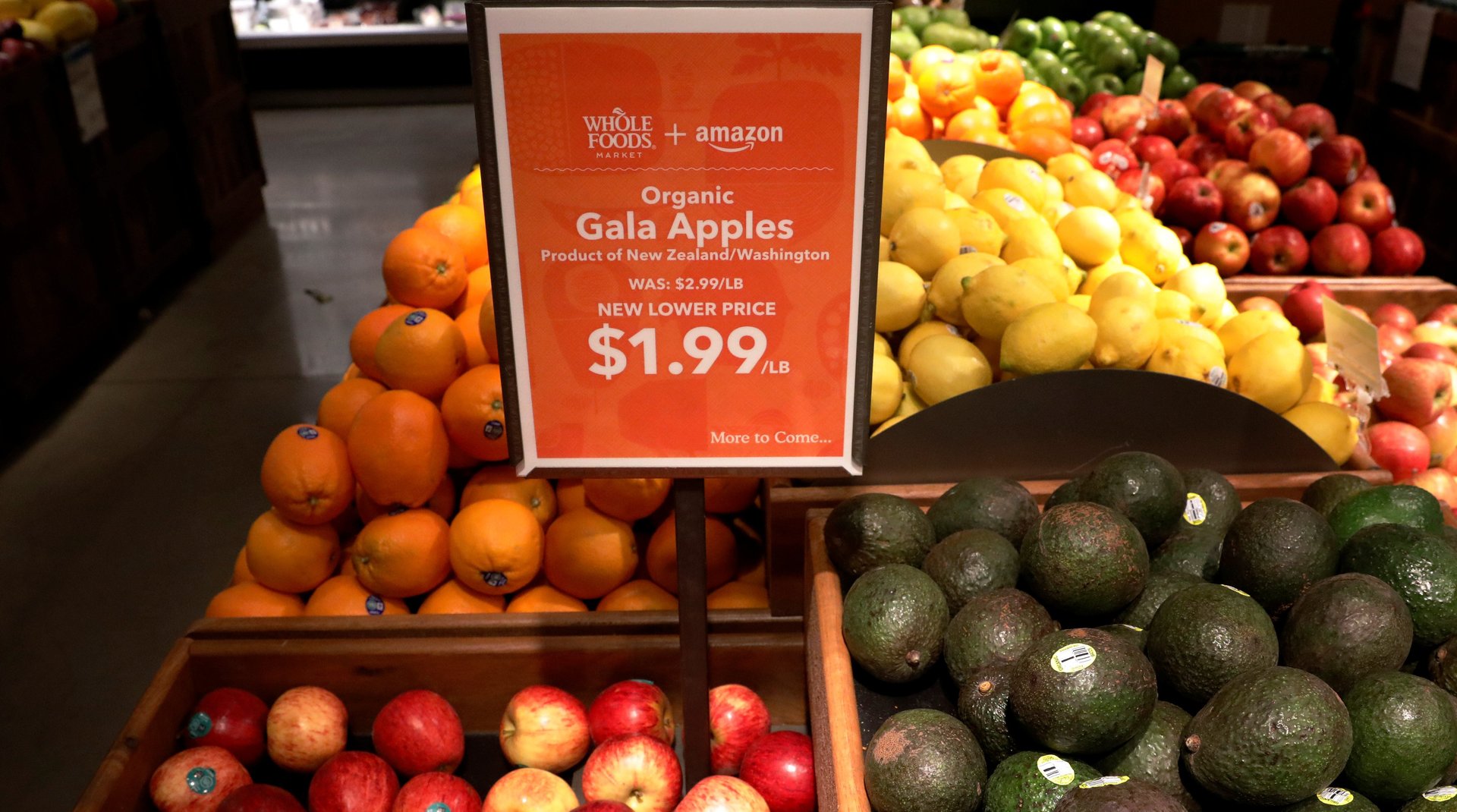There’s still one big reason why people aren’t buying their groceries online
Everyone wants to figure out online grocery. There are the big guys, like Amazon, Walmart, and Target, as well as traditional grocers like Safeway, who are investing in ordering and delivery capabilities to help them compete as more customers move from in-store shopping to placing orders from their phones and computers. San Francisco-based startup Instacart has raised more than $700 million, at a valuation of $3.4 billion, to make grocery delivery mainstream. In the US alone, consumers are expected to spend more than $100 billion a year on online groceries by 2025.


Everyone wants to figure out online grocery. There are the big guys, like Amazon, Walmart, and Target, as well as traditional grocers like Safeway, who are investing in ordering and delivery capabilities to help them compete as more customers move from in-store shopping to placing orders from their phones and computers. San Francisco-based startup Instacart has raised more than $700 million, at a valuation of $3.4 billion, to make grocery delivery mainstream. In the US alone, consumers are expected to spend more than $100 billion a year on online groceries by 2025.
In spite of all that, there’s still one big reason why so many people still aren’t buying groceries online: They prefer to handpick items themselves.

According to survey data from Morgan Stanley, 84% of people say they decided against ordering groceries online because they preferred to physically see and choose their groceries. That was unchanged from the results in 2016, when 84% of respondents also felt that way.
Getting people to feel comfortable with having their groceries selected for them is an uphill battle, especially with produce. People can have very particular preferences when buying their fruits and vegetables. For example, maybe they like their bananas a little green, but their avocados ripe and ready to eat.
A 2014 training video by Instacart gave detailed instructions to hired shoppers on how to select produce. “Please make sure there are no bruises, no cuts, no mold, it’s not too soft, not too hard, just perfectly ripe,” the instructor said, before giving even more specific rules for bananas. (“The perfect banana is yellow with green at the tips. For larger quantities pick ones that are less ripe. If the customer orders 15 bananas, they’re going to need more time to eat them.”)
Amazon has also struggled to get produce picking right for AmazonFresh, its grocery delivery service. At its Seattle fulfillment center, the company used to waste nearly a third of the bananas it purchased because Fresh only sold the fruit in bunches of five. Workers would discard any bunches of three or four, and tear off and throw out the extra banana on a bunch of six, a research paper by a student at MIT explained in 2015.
Another thing that online grocers will have to figure out: The share of people who say they tried and didn’t like ordering groceries online also increased to 27% in 2017, from 17% the year before.